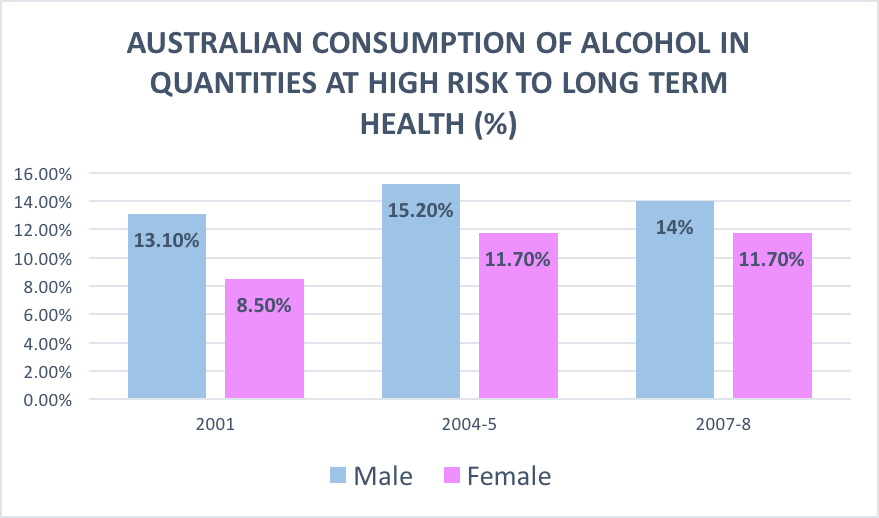It wasn’t until the 1970s that women were allowed to drink in public bars.
It still took decades after this for women to be welcome at the same bars as men.
Today there’s no longer such a stigma attached to female alcohol consumption in Australia. This is a win for gender equality, yet not necessarily a positive for health.
A recent study released by the Medical Journal Australia (MJA) shows that in 2001, women were drinking 40 per cent less alcohol than their male counterparts.
By 2011 and 2012, women were drinking 33 per cent less.
Although men continue to consume more alcohol than women, it’s evident that women are catching up.
The World Health Organisation (WHO) explains that although alcohol is the leading risk factor for death in males aged 15-59, women may be more vulnerable to alcohol related harm.
“Alcohol use among women has been increasing steadily in line with economic development and changing gender roles,” the study stated.
Statistics from the Australian Bureau of Statistics show a gradual increase in high-risk drinking in females and a slight decline in males.
The capacity for males to drink more frequently and in greater quantities explains their higher prevalence of harm and consumption related illnesses such as cancers or cardiovascular diseases.
Yet, with the number of health and social consequences considered on the basis of level of intake versus blood alcohol concentration (BAC), the gender differences reduce significantly.
The study explains that women may achieve higher BAC readings than men after drinking the same quantity of alcohol. Factors such as lower body weight, smaller liver capacity and higher proportion of body-fat, explain why.
What’s even more concerning are findings that 40 per cent of Australian women still consume alcohol while pregnant, despite changes to the National Health and Medical Research guidelines that state abstinence is the safest option.
However, a study conducted by the Australian government shows a significant decrease in daily drinking between 2010 and 2013 from 7.2 per cent to 6.5 per cent, the lowest levels since 1991.
Amy Pennay, sociologist and expert in consumption research, tells upstart that drinking is actually decreasing among young people.
“People are drinking far less than they were five to ten years ago,” she says.
Pennay attributes this decline to Australia’s working population being too busy to socialise and the younger generation’s occupation with technology and social networking.
“We’ve seen a really concerted public health effort and public health focus on alcohol in the past ten years, the opposite of what the media would have you believe,” she says.
However, she explains that men’s drinking is decreasing much faster than women’s.
“In terms of the reason it’s narrowing, I think it’s generally more to do with the fact that there are a whole bunch of behaviours that are more permissible nowadays,” Pennay says.
“Women are allowed in spaces where there is drinking and are often trying to keep up with men, they are empowered by being able to drink with the boys.”
This may be cause to celebrate, but there is still room for concern. These relaxed attitudes could be detrimental to the long-term health of those who are drinking at alarming levels, whether they are male or female.
Pennay says that despite women catching up, there will always be a gap.
“Men have the physical capacity to consume more alcohol than women so I think we will continue to see them consume more and continue to experience more harm,” she says.
“I can see the gap narrowing further, but I just don’t think women will ever catch-up.”
 Erica Jolly is a third year Bachelor of Arts student at La Trobe University. You can follow her on Twitter: @EricaJolly
Erica Jolly is a third year Bachelor of Arts student at La Trobe University. You can follow her on Twitter: @EricaJolly








